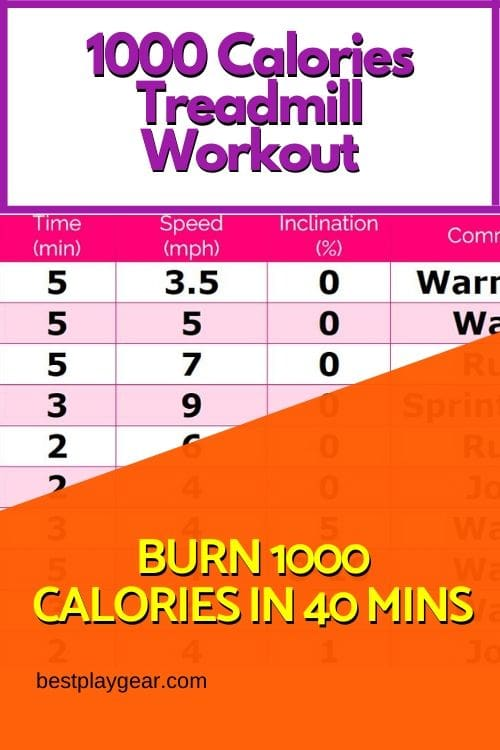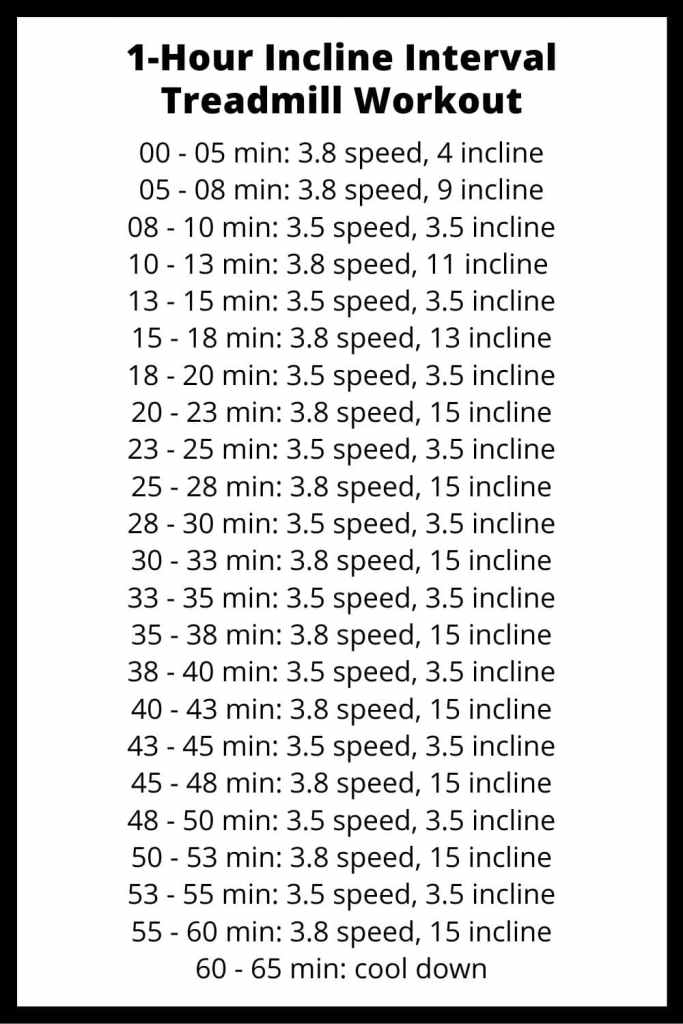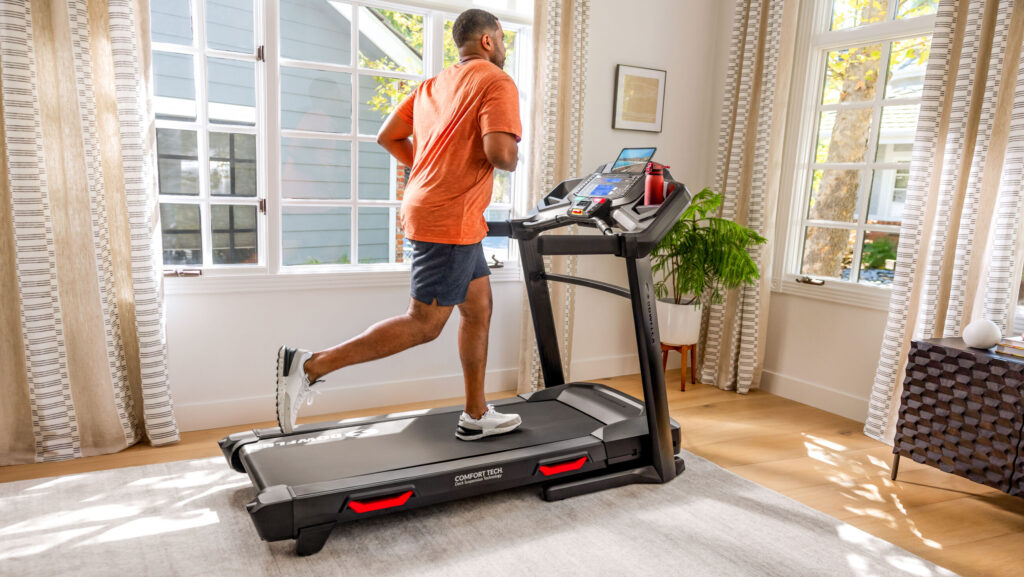Have you ever wondered how long it takes to burn 1000 calories while walking on a treadmill? Well, the answer may surprise you! In this article, we will explore the factors that influence calorie burn during treadmill walking, and provide you with a rough estimate of the time it would take to achieve this impressive feat. So, grab your walking shoes and get ready to learn how long you’ll need to hit the treadmill to reach that 1000-calorie mark effortlessly and effectively.
Factors Affecting Caloric Burn on a Treadmill
Body Weight
One of the primary factors that affect the number of calories burned on a treadmill is your body weight. The more you weigh, the more energy your body needs to move, resulting in a greater caloric burn during your treadmill workout. Therefore, individuals with a higher body weight will generally burn more calories compared to those who weigh less.
Walking Speed
The speed at which you walk on a treadmill also plays a significant role in determining the number of calories you burn. Walking at a faster pace requires more energy expenditure, leading to a higher caloric burn. So, if you’re aiming to burn more calories, increasing your walking speed can be an effective strategy.
Walking Incline
Walking incline refers to the tilt of the treadmill belt. Walking uphill (elevated incline) requires more effort from your muscles and increases the intensity of your workout. This higher intensity translates into a higher caloric burn. Therefore, adjusting the incline on your treadmill can be a great way to boost your calorie-burning potential.
Fitness Level
A person’s fitness level directly impacts their caloric burn on a treadmill. Those who are more physically fit have a higher aerobic capacity, allowing them to exercise at a higher intensity and burn more calories. However, as you improve your fitness level over time, your body becomes more efficient at performing exercise, which can lead to a slight decrease in caloric burn. Nonetheless, focusing on increasing your fitness level through consistent exercise can help maximize the calories burned during treadmill workouts.
Calculating Caloric Burn
MET Values
MET (Metabolic Equivalent of Task) values quantitatively represent the amount of energy expended during different activities. Each activity is assigned a specific MET value, which is then used to calculate the number of calories burned. For treadmill walking, the MET value ranges from 2.9 to 6.5, depending on the intensity of the workout.
Calories Burned per Minute
To determine the caloric burn per minute, you multiply your weight in kilograms by the MET value of the activity and then divide it by 200. This equation gives you an estimate of the number of calories burned per minute during treadmill walking.
Formula for Caloric Burn
The formula for estimating the total caloric burn during a treadmill workout is as follows: Calories Burned = (MET Value) x (Weight in kg) x (Duration in minutes) / 200. By plugging in the appropriate values, you can get an estimate of the total calories burned during your treadmill session.
Walking Speeds and Caloric Burn
4 mph
Walking at a speed of 4 mph is considered a moderate intensity workout. At this pace, you can expect to burn approximately 330 calories per hour if you weigh around 150 pounds. However, the number of calories burned may increase or decrease depending on factors like body weight and fitness level.
4.5 mph
Increasing your walking speed to 4.5 mph will elevate the intensity of your workout, leading to a higher caloric burn. At this speed, you can burn around 370 calories per hour if you weigh about 150 pounds. Remember, this value can vary based on individual factors.
5 mph
Walking at a brisk pace of 5 mph can significantly increase your caloric burn. At this speed, you can expect to burn approximately 440 calories per hour if you weigh around 150 pounds. It’s important to note that the rate of caloric burn varies from person to person.
5.5 mph
Stepping up the intensity, walking at 5.5 mph can help you burn even more calories. At this speed, you can expect to burn around 500 calories per hour if you weigh about 150 pounds. However, it’s essential to listen to your body and gradually increase your speed to prevent any strain or injuries.
6 mph
Walking at a brisk pace of 6 mph can be quite challenging, but it can also lead to a higher caloric burn. At this speed, you can burn approximately 570 calories per hour if you weigh around 150 pounds. It’s important to remember that individual factors can influence your actual caloric expenditure.
Walking Inclines and Caloric Burn
0% Incline
Walking on a flat surface with no incline is a comfortable option for beginners or those who prefer lower-intensity workouts. While the caloric burn may not be as high as with incline walking, it still provides cardiovascular benefits. On average, you can burn about 230 calories per hour walking at 0% incline if you weigh around 150 pounds.
2% Incline
Adding a slight incline of 2% to your treadmill workout can help increase the challenge and caloric burn. Walking at this incline can burn around 280 calories per hour if you weigh about 150 pounds. It’s a good idea to gradually increase the incline as you build strength and endurance.
4% Incline
Walking at a 4% incline provides more resistance and engages different muscle groups, resulting in a higher caloric burn. At this incline, you can expect to burn approximately 330 calories per hour if you weigh around 150 pounds. Experiment with different incline levels to find the intensity that works best for you.
6% Incline
Increasing the incline to 6% further intensifies your treadmill workout and boosts the number of calories burned. Walking at this incline can help you burn around 380 calories per hour if you weigh about 150 pounds. Remember to listen to your body and adjust the incline to a level that challenges you without causing excessive strain.
8% Incline
Walking at an 8% incline provides a significant challenge and a considerable caloric burn. At this incline, you can expect to burn approximately 430 calories per hour if you weigh around 150 pounds. It’s important to maintain proper form and pace yourself when walking on higher inclines to avoid overexertion.
Interval Training
Definition
Interval training involves alternating between periods of high-intensity exercise and periods of lower-intensity or rest. By incorporating intervals into your treadmill workout, you can increase the intensity and caloric burn of your sessions. This training method is highly effective for improving cardiovascular fitness and burning calories.
Benefits
Interval training offers numerous benefits, including increased caloric burn, improved cardiovascular endurance, and enhanced fat burning. It also helps break the monotony of steady-state workouts and keeps you engaged and motivated throughout your treadmill sessions. Additionally, interval training can be customized to your fitness level and goals.
Sample Interval Workout
A sample interval workout on a treadmill may involve alternating between walking at a moderate pace for two minutes and then increasing the speed or incline for one minute, repeating this pattern for a designated period of time. This type of workout allows you to challenge your body and maximize your caloric burn in a shorter amount of time. Remember to warm up and cool down properly before and after the interval session.
Additional Factors to Consider
Resting Metabolic Rate
Your resting metabolic rate (RMR) is the number of calories your body burns at rest. It is influenced by factors such as age, gender, body composition, and genetics. By incorporating regular exercise like treadmill walking, you can increase your RMR, resulting in an overall higher daily caloric expenditure.
Exercise Duration
The duration of your treadmill workout directly affects the number of calories burned. Generally, the longer you exercise, the more calories you burn. However, it’s important to consider your fitness level and gradually increase your workout duration to avoid overexertion or injury.
Muscle Mass
Muscle mass plays a significant role in determining your basal metabolic rate (BMR) and overall caloric burn. The more lean muscle mass you have, the higher your BMR, which results in a greater calorie expenditure even at rest. Incorporating strength training exercises into your routine can help increase muscle mass and boost your overall caloric burn.
Post-workout Caloric Burn
After completing your treadmill workout, your body continues to burn calories at an elevated rate. This post-workout caloric burn is known as excess post-exercise oxygen consumption (EPOC) or the “afterburn effect.” The intensity and duration of your workout can influence the magnitude and duration of this effect, leading to additional calorie expenditure.

Increasing Caloric Burn on a Treadmill
Increasing Walking Speed
One of the most effective ways to increase your caloric burn on a treadmill is to increase your walking speed. Gradually challenge yourself by walking at a faster pace while maintaining proper form and comfort. Remember to listen to your body and avoid pushing beyond your limits.
Adding Incline
Incorporating incline walking into your treadmill workout can significantly boost the number of calories burned. Gradually increase the incline setting as your fitness level improves, allowing you to engage different muscle groups and increase the intensity of your workout.
Interval Training
As mentioned earlier, interval training is a highly effective method for increasing caloric burn on a treadmill. By combining periods of higher intensity exercise with periods of lower intensity or rest, you can elevate your heart rate and increase calorie expenditure. Experiment with different interval durations and intensities to find a routine that suits your fitness level and goals.
Increasing Workout Duration
If you’re looking to burn more calories on a treadmill, increasing your workout duration can be an effective strategy. Start by adding a few extra minutes to your current routine and gradually work your way up to longer sessions. As you build endurance, your body will become more efficient at burning calories and you’ll see an increase in caloric burn.
Safety Precautions
Start Slowly
When starting or increasing your treadmill workout routine, it’s important to start slowly and gradually progress. Sudden increases in intensity or duration can lead to muscle strains, joint injuries, or excessive fatigue. Listen to your body and give yourself time to adjust to the new demands of your workout.
Proper Footwear
Wearing appropriate footwear while walking on a treadmill is essential for maintaining proper foot alignment and reducing the risk of injuries. Invest in a good pair of walking or running shoes that provide adequate cushioning, support, and stability.
Maintain Proper Posture
Maintaining proper posture while walking on a treadmill is crucial for avoiding strain or injuries. Keep your head up, shoulders relaxed, and arms swinging naturally. Avoid leaning forward or backward, and engage your core muscles to support your spine.
Stay Hydrated
Staying hydrated during your treadmill workouts is vital for optimal performance and overall well-being. Drink water before, during, and after your workout to replace any fluids lost through sweat. Dehydration can negatively affect your energy levels and increase the risk of muscle cramps or dizziness.
Alternatives to Traditional Treadmill Walking
Running
Running on a treadmill provides a higher intensity workout and leads to a greater caloric burn compared to walking. If you’re looking for a more challenging cardiovascular exercise, incorporating running into your routine can be a great option.
Jogging
Jogging is a lower-impact alternative to running that can still provide an effective caloric burn. It’s a great option for those who prefer a moderate-intensity workout and want to reduce stress on their joints.
HIIT
High-Intensity Interval Training (HIIT) involves short bursts of intense exercise followed by brief periods of rest or low-intensity recovery. This training method can significantly increase calorie burn and improve cardiovascular fitness. Incorporating HIIT workouts on a treadmill can be a time-efficient way to maximize your results.
Elliptical Trainer
Using an elliptical trainer provides a low-impact alternative to treadmill walking or running. This machine allows for a fluid and smooth motion while engaging both the upper and lower body muscles. It can be an excellent option for individuals with joint issues or those looking to add variety to their workout routine.
Stair Climber
The stair climber machine simulates the movement of climbing stairs, providing a challenging workout for the lower body and cardiovascular system. This alternative to treadmill walking can help increase calorie burn and strengthen the muscles in your legs and glutes.
Conclusion
Walking on a treadmill can be an excellent form of exercise for burning calories, improving cardiovascular fitness, and boosting overall health. By considering factors such as body weight, walking speed, walking incline, and fitness level, you can maximize your caloric burn during treadmill workouts. Additionally, incorporating interval training, increasing workout intensity, and exploring alternative exercises can help spice up your routine and increase calorie expenditure. Remember to prioritize safety, listen to your body, and enjoy the journey towards a healthier, fitter you.


